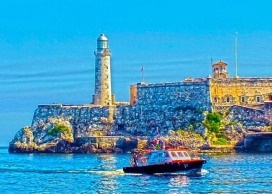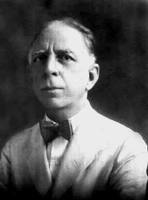
Havana ephemeris. 11th of June.
1876. Of Italian parents established in Regla, Miguel Coyula Llaguno is born in this Havana neighborhood.
He was a prominent journalist, writer, politician and fighter for the independence of Cuba. He reached the rank of Commander of the Liberation Army. He published works in El Cubano Libre and in Patria.
When the war for independence resumed in February 1895, he initially had to leave Cuba. A short time later he returns on an expedition and then participates in several confrontations with the Spanish soldiers under the direction of Generals José Maceo, Calixto García and Mario García Menocal. The latter is done by his assistant.
After the conclusion of the war he never accepted any type of monetary compensation for his services in the Liberation Army.
He also did not accept a proposal to occupy the vice presidency of the country, under the Menocal government.
He died in Marianao, on November 23, 1948. He was watched in the Hall of Lost Steps, of the Havana Capitol, and his burial was an impressive expression of mourning.
In the park of Regla there is a bust of him in his tribute that was inaugurated on June 11, 1949.
He is currently the distinguished patriot of the municipality of Regla.
1938. The Office of the Historian of the City of Havana is officially inaugurated. Its founding director was Emilio Roig de Leuchsenring who since June 1, 1935 had been appointed City Historian.

The Office of the Historian of the City through many years has carried out a commendable job with regard to the conservation and remodeling of the urban historic center and other areas of the Cuban capital and in the development of important research projects, book publishing as well as in the training of specialists.
The Office of the City Historian was initially located in the Plaza de Armas in two rooms on the ground floor of the old Palace of the General Captains and later the Municipal Palace, today the main headquarters of the City Museum.
Subsequently, the headquarters was transferred to other larger and more adequate premises on the mezzanine floor of the aforementioned Palace and in December 1947 it was located in the Lombillo Palace, in front of the Plaza de la Catedral, in Old Havana.
The Office was directed by Doctor Roig until 1964 when he died.
On August 23, 1969, the Office became operational again. Since its reopening directed by Doctor Eusebio Leal Spengler, until his death on July 31, 2020.
The meritorious work carried out over time by the Office of the Historian of the City of Havana has been recognized both nationally and internationally.
1981. The Raúl Roa García Higher Institute of International Relations is founded in Havana.

It is the Cuban center in charge of training specialists in the field of International Relations and Foreign Policy. It had its antecedents in the first Foreign Service School founded in 1960 by Foreign Minister Raúl Roa.
Subsequently, on January 11, 1971, at the initiative of Roa, the Foreign Service Institute was created, whose mission was defined in the preparation of the new officials who would join the activity, as well as the diplomats who were already serving in their different responsibilities.
In 1976, the National Network of Higher Education Centers was established in the country and the creation of the Higher Institute of Foreign Service, attached to the Ministry of Foreign Affairs, under the methodological direction of the Ministry of Higher Education, was established.

Five years later, based on new projections of the socioeconomic and political activity of the country that demanded the improvement of study plans, the expansion of knowledge related to the economy, the increase and diversity of courses aimed at nationals and foreigners and of the investigative activity in the field of International Political and Economic Relations, it was decided to convert the teaching center into the Higher Institute of International Relations, which was later identified with the name of Raúl Roa García, the Chancellor of dignity.
The Institute participates extensively in international academic activity and maintains collaborative links with similar institutions in Latin America, North America, Africa, Asia and Europe. It receives prestigious foreign professors and specialists to offer conferences and seminars on current international issues.
